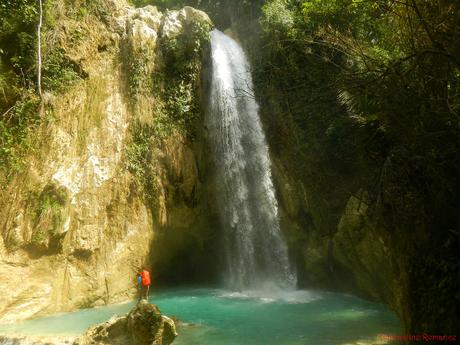
Aside from beautiful sandy beaches, Southern Cebu is a haven for some of the country’s most magnificent and pristine waterfalls, each with its own unique characteristic and grandeur. Many of these natural wonders are left in their pristine state even if they have become quite popular among Cebuanos. The mighty Inambakan Falls in the municipality in Ginatilan is one of these must-visit natural treasures. The waterfall is our jump-off point and our first destination in this early-year adventure.
After meeting Sir Ruel, a few freelancers, and the Body and Soul Outdoors (BASO) group at the Cebu South Bus Terminal early in the morning of January 10, 2015, we took the 5AM bus to Ginatilan. The sun was already bright and shining by the time we reached the municipality of Alegria.

As we cruised along the scenic Cebu southeastern coastal road that faces the azure Tanon Strait, we saw a beautiful, sunny, slightly cloudy sky with a bit of strong wind. Yes, you guessed it; it’s a great day to climb!
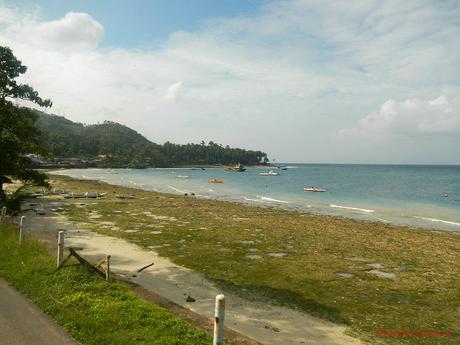
After three hours on the road, we finally arrived at the quaint and quiet town of Ginatilan, a fifth class municipality in Southern Cebu. Check out their main avenue; it’s totally devoid of trash. Our cities should emulate this town—clean, green, and friendly.
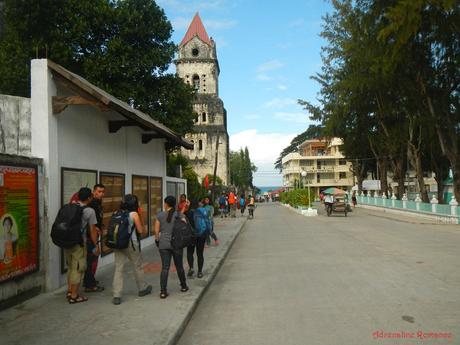
We headed straight to their market to have a huge breakfast, buy packed lunch and ingredients, and do some last-minute shopping. Sweetie and I bought fried pork and sauteed vegetables for lunch.

The Town of Ginatilan
Three guys who weren’t able to catch the bus with us sent a text message to Sir Ruel that they were on their way. Sweetie and I used the extra time to do an impromptu side trip around the Ginatilan town center.
First stop was their plaza, a common community area—a town square, in other words—in almost every town and city in the Philippines. Plazas were introduced by our Spanish colonizers way back in the 17th century, and each one is typically surrounded by three institutions: the cathedral, the cabildo (or administrative center), and the audiencia (or law court).
Like a thumb mark, each plaza is unique. Ginatilan’s distinguishing features are its lighthouse and proximity to the coast; the plaza teeters along an embankment which faces Tanon Strait. Rails and posts along the ledge help prevent people from falling over the edge.
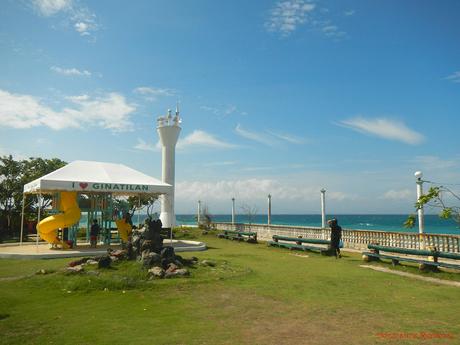
Ginatilan’s modern lighthouse has beacons and monitoring systems to warn marine vessels that stray too close to the shallow shore.
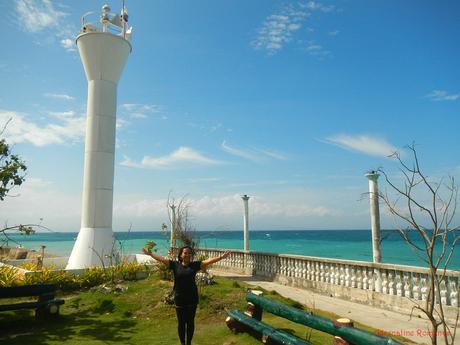
The sound of waves crashing to the shore was very pleasant and calming to the ears. The wind was stronger than usual, so the surf was up. Nice day for skimboarding, don’t you think?
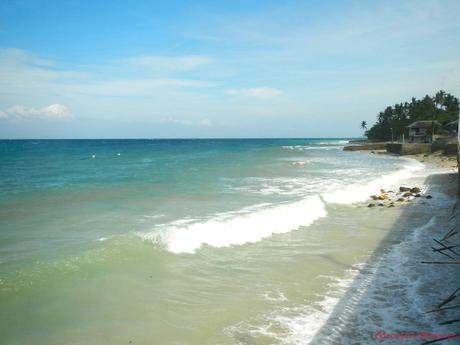
The main parish of Ginatilan is St. Gregory the Great Parish Church, which was constructed in February 2, 1829. Featuring baroque architecture, the church, which was originally a modest chapel, is made of meticulously cut coral stone and held by mortar. It gained parochial status in 1847.
We love old stone churches like this as they take us to the past. It was still closed when we got there, so we weren’t able to take interior shots.
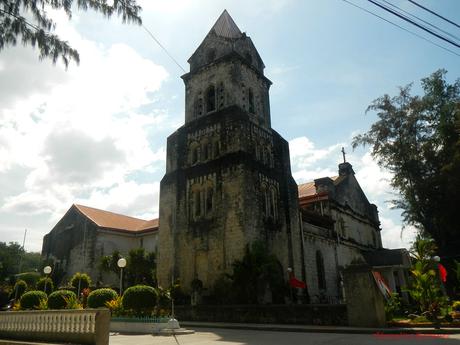
Across the parish is this large stone wall with the label Puerta de la Marina. In the past, this might be a sturdy wall meant to protect the town from pirates and invaders. Sadly, it’s now a shadow of its former self.
We should protect cultural and historical structures like these.
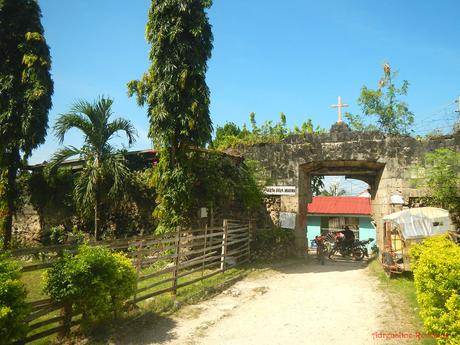
This 18th century building may have once housed the audiencia or the cabildo in the past. Nowadays, the building still stands and is used as a municipal hall and a police station.

After an hour, the last three guys arrived, which meant that it was time to depart for our first destination of this adventure. Check out their habal-habals; they’re large and powerful which makes them ideal to ride up the mountainous areas of the municipality.
Best of all, their drivers have ingeniously welded wrought iron steps, which makes our ride quite comfortable and less strenuous on our lower limbs.
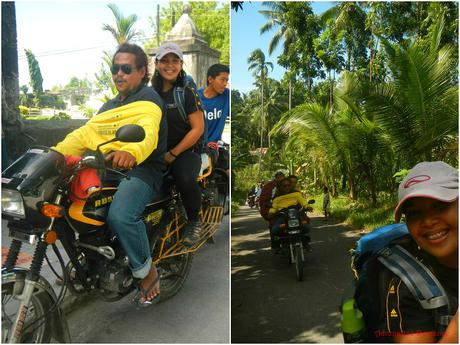
Inambakan Falls
It took us around a quarter of an hour to reach our jump-off point from the town proper. We disembarked from our habal-habals, paid the entrance fee, and proceeded down the cemented steps which led most of the way to our first destination.
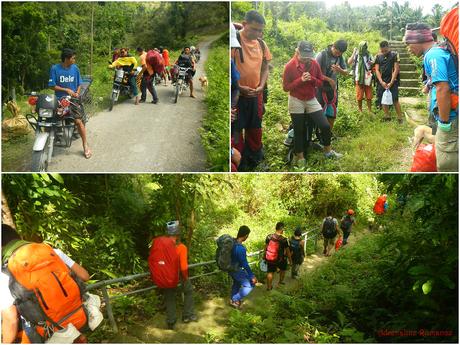
Just check out that beautiful river. The water is so clean and clear that you can spot individual stones at the bottom. Just be careful as you trek here as the trail is quite wet and slippery.

Flowing water from the source cascades down and around large boulders on their way to the sea. The rushing water is definitely a sight—and sound—to behold. Mother Nature never fails to mesmerize us.
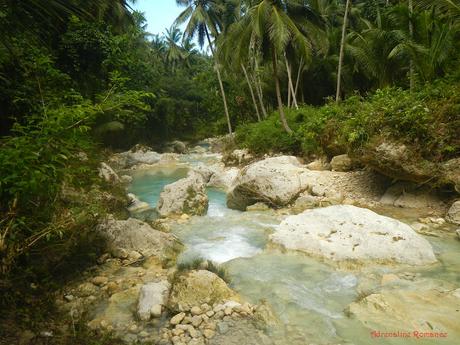
As we walked down the trail, which seemed to get wetter and muddier, the sound of water crashing down a pool became louder and more prominent. Then rounding a bend, we had our first glimpse of our awesome destination, the mighty Inambakan Falls.
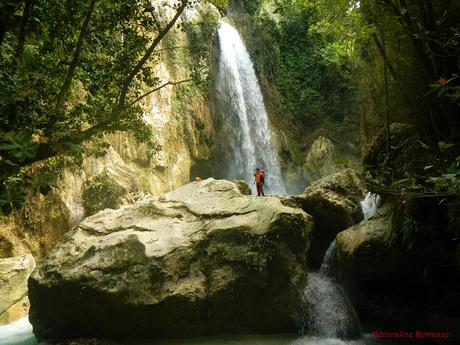
Locals placed these cottages for visitors to use. We couldn’t find a sign that states the rental rates. No one charged us when we sat down for a few minutes to reposition the contents of our packs when we left the waterfall.
However, we are assuming that a regular caretaker collects a minimal fee for those who spend a considerable amount of time in these cottages.
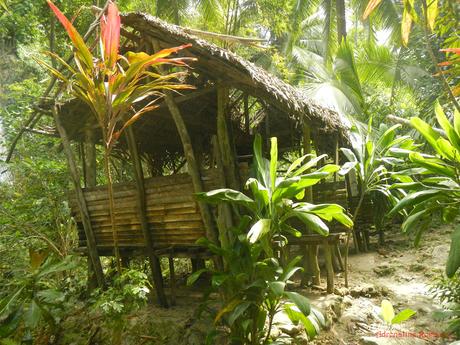
There are several smaller waterfalls as you descend down to the main waterfall’s pool. Be careful as the water’s flow crosses the trail.
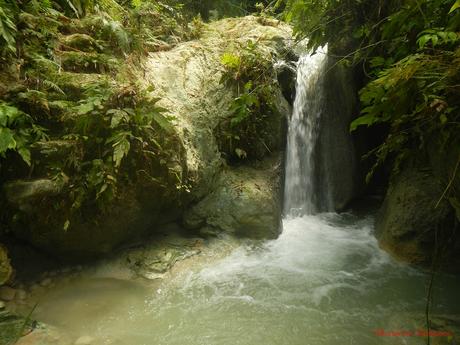
Here’s another small cascading waterfall. Do you want to take a cool, refreshing shower, Sweetie?
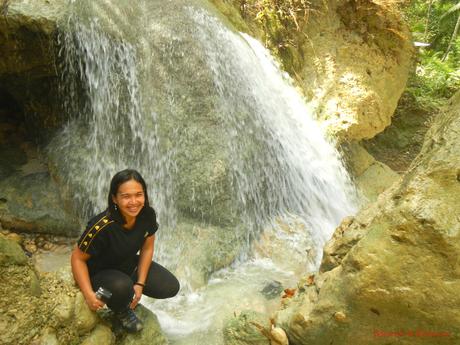
The majestic 100-foot Inambakan Falls is an example of a powerful plunge waterfall in which the water loses contact with the rock wall as it falls down the pool. In fact, the fall is so strong that it creates an everlasting mist around the area. See the hazy photo below? That’s not Photoshopped; that’s actually the mist that emanates from Inambakan Falls.
We actually felt the mist tens of yards away from the edge of the waterfall’s pool. That’s how powerful it is. Standing directly across Inambakan Falls will get you definitely soaked in minutes.

To have a better idea on just how majestic Inambakan Falls is, we figured out we’d give you a “live” glimpse of this beautiful waterfall. Check out the video below:
This is the only area where the mist is quite light. It’s a flat rocky area a little to the side of the waterfall’s pool.
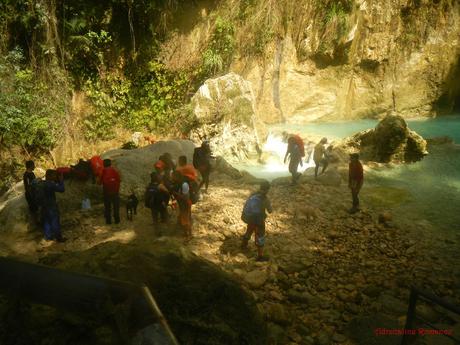
Okay, guys and girls! It’s time to put down your packs and have a dip in the cool, clear waters of Inambakan Falls.

Now, that’s totally refreshing water straight from the mountain! The green part is quite deep at around 8 feet, but one can swim towards the cavern behind Inambakan’s curtain. Directly behind the fall is a large rock where one can perch on.
Just be careful not to get directly below the fall; the force is so strong that it would push you underwater.
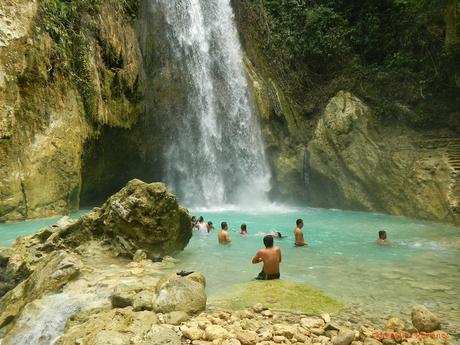
If you don’t know how to swim, don’t worry. There’s a nice shallow pool beside the main pool where you can frolic around. And if you put your back below the water’s flow, you will be treated to Mother Nature’s healing, stress-releasing massage.
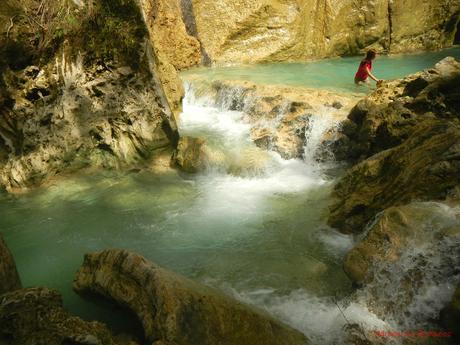
Where are you taking me, Sweetie? The area around Inambakan Falls has several rock outcroppings that provide excellent vantage points for photo shoots.
Wet and mossy cliffs at the side of the waterfalls make the rock wall unscalable.
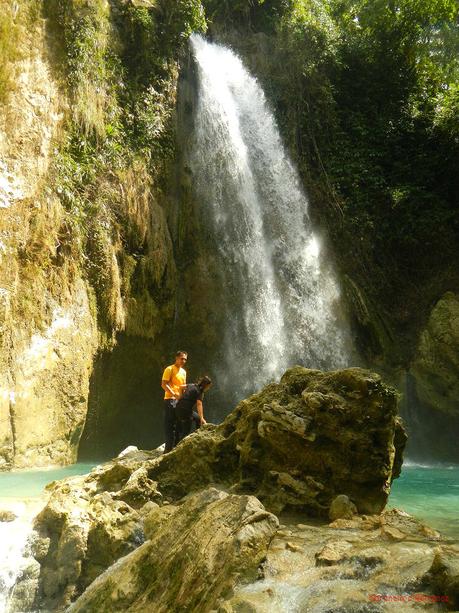
While the rest of the team took a dip, Sweetie and I headed out to a ledge beside the waterfall. Inambakan Falls got its namesake from this ledge; residents gleefully jump (ambak, in Bisaya) from this ledge into the deep pool below. Handcarved steps make access to the ledge easier.
The wet, slippery ledge also provides a commanding view over the waterfalls and the river beyond it.
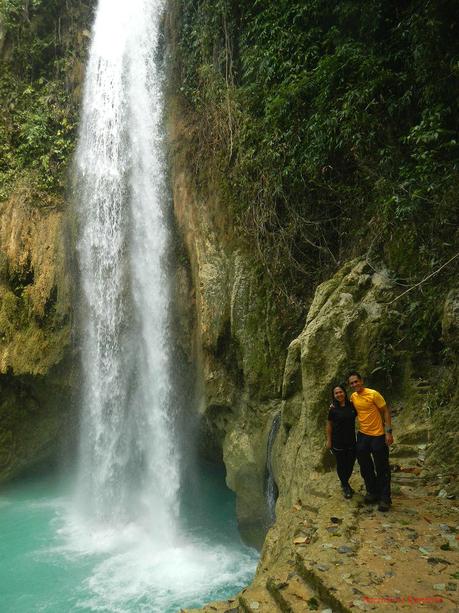
Doesn’t that look inviting? Aren’t you tempted to simply take off your clothes and dive?
At this vantage point, you can just see how powerful the waterfall is.
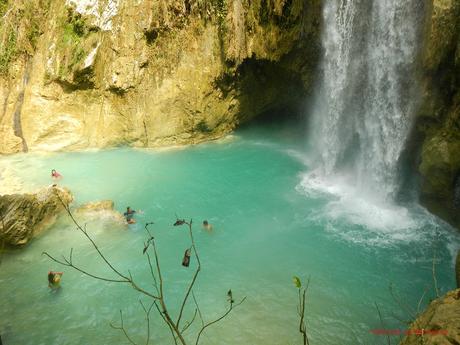
Everyone had an excellent refreshing dip, which was truly a boon on this hot day. After changing back to our trekking clothes, we had a last group photo op before we said goodbye to this paradise and head off to our main objective, the sacred and expansive summit of Mt. Hambubuyog.
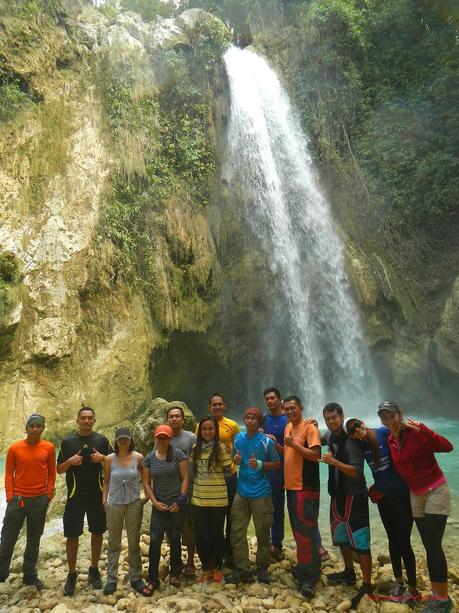
Watch out for our next post as we document the group’s climb to Mt. Hambubuyog.

